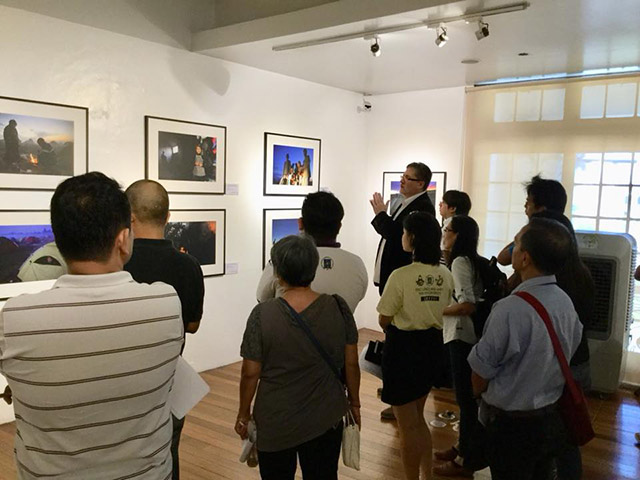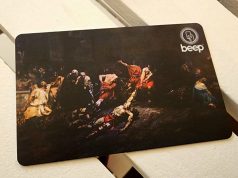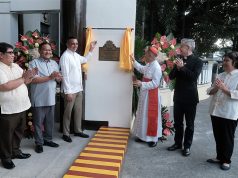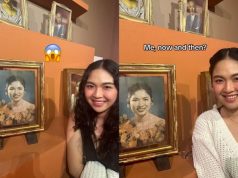
Museums have regained their popularity among the young generation because of social media but one person shared on Twitter that people shouldn’t use such venues for their “personal photoshoot.”
According to Milo Atienza Parada, people have been going to museums for the sake of taking selfies to be posted on their respective Instagram accounts.
Although he stressed that there was nothing wrong with it, he cited that museums are generally “places of respect and (art) appreciation.”
Ang sad & disappointing na many Filipinos just go to museums for the selfies, and don’t observe proper decorum. Touching exhibits just for the perfect pose? Lol.
Museums are places of respect and appreciation, not supplementary backdrops for your Instagram famewhore dreams.— Milo Atienza Parada (@emparadas) May 29, 2018
Clarifying some thing lang po:
1. This is NOT about social class. I’ve seen rich people lack proper decorum in museums, and less fortunate people act accordingly. Having said that, the value of respect should be understood as something that IS NOT only exclusive to the rich.
— Milo Atienza Parada (@emparadas) May 31, 2018
To say that only a certain group of people deserve to go inside museums is to not get my point.
It’s about people who cant give respect to others. Lack of respect excuses NO ONE, rich or poor. To excuse ANYONE’s lack of respect is to insult our culture of tradition and respect.— Milo Atienza Parada (@emparadas) May 31, 2018
Last month, the National Museum of the Philippines opened its newest building to the public—the National Museum of Natural History.
It houses the country’s collections of flora and fauna, with more than ten galleries dedicated to plants, animals and fungi endemic to the Philippines.
According to their Facebook post, visitors are not allowed to engage in flash and commercial photography. They are also banned from acts of videography and touching museum objects and artifacts.
However, Parada has observed that some people have been touching artworks and exhibits during their visit. In addition, the museum has been turned into a “photoshoot venue,” according to him.
Why people should not take selfies in museums
The website of Artists Network released a post that enumerated some of the reasons why people should not whip out their smartphones or cameras in such places.
According to the post, focusing too much on taking selfies might rob people of the actual experience in appreciating art. It added that accidents might even occur because of such engrossment.
TIME Magazine reported in 2017 that a woman unwittingly destroyed an artwork worth around $200,000 in a temporary art exhibit in Los Angeles, U.S.A because she was taking a selfie.
Artists Network added that selfie-obsessed people are distracting those who genuinely wanted to appreciate and contemplate the art.
Parada said in his Twitter thread, “It becomes a problem once their selfies and noise block other people’s views, delay lines, and hassle other visitors.”
“Photo taking without consideration for others… becomes a hassle lalo na if a single person already took 173 modeling photos.”
He also attributed it to the popular phenomenon of selfies and how it impacts museum visits.
“We’ve become a selfish generation: We want our faces to be the subject, the art becomes second/never because they don’t know what’s it (art) about.”
Another user, Alyssa Viado, replied, “Museums have been reduced to aesthetics instead of a facet (of) knowledge.”
User Erikarie Higano added, “Edi sana gumawa sila ng photoshoot sa labas kung puro selfie lang nila gagawin sa museum, nangdadamay pa ng mga exhibits sis, ka-stress.”
More museums are now accepting the selfie phenomenon
Artists Network shared that the popularity of selfies is the same factor on why people kept visiting museums in the first place.
“If they share those images on social media, art institutions and museums get a much appreciated ‘word of mouth’ boost.'”
“With selfies, people show how and when art fits into their daily lives. If they share those images with others, then art in context simply becomes more a part of our world,” it explained.
The website also added that it’s people’s way of preserving “a really great memory,” especially if the artwork is renowned or special.

Furthermore, it is a form of how people generally express their creativity. “Search #museumselfie and you’ll be overwhelmed by all the fun, quirky ways people have put themselves and objects of art and history together,” it noted.
The concept of selfies has also gained popularity within the museum circle. In fact, there are now local interactive museums that encourage people to have selfies with the artwork.
Among these are The Desert Museum and the Upside Down Museum in Pasay, Art in Island in Cubao, the Philippine Science Centrum in Marikina, the Quezon City Experience (QCX) and The Mind Museum in Taguig.
In the United States, there is a museum dedicated to selfie-loving people, the Museum of Selfies. It allows visitors to explore the “history and cultural phenomenon of the selfie” while taking pictures in their interactive installations.
Hannah Williams, an art history junior research fellow at the University of Oxford, noted:
“Selfies and photographic interaction with museum objects do not necessarily destroy visitor experiences or deny close engagement with collections. In fact, they might permit entirely new ways of bridging the divide.” — Art by Uela Badayos









